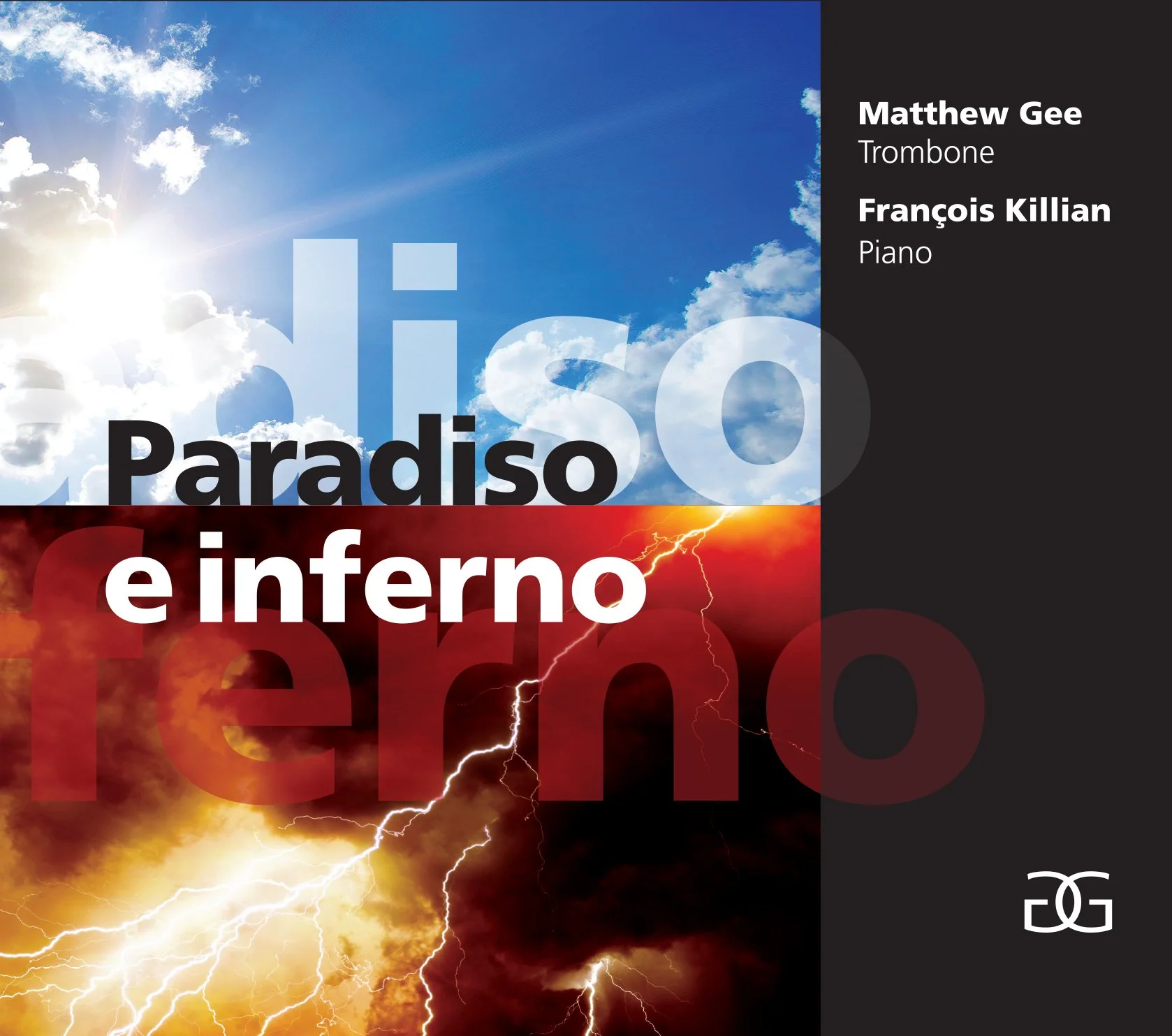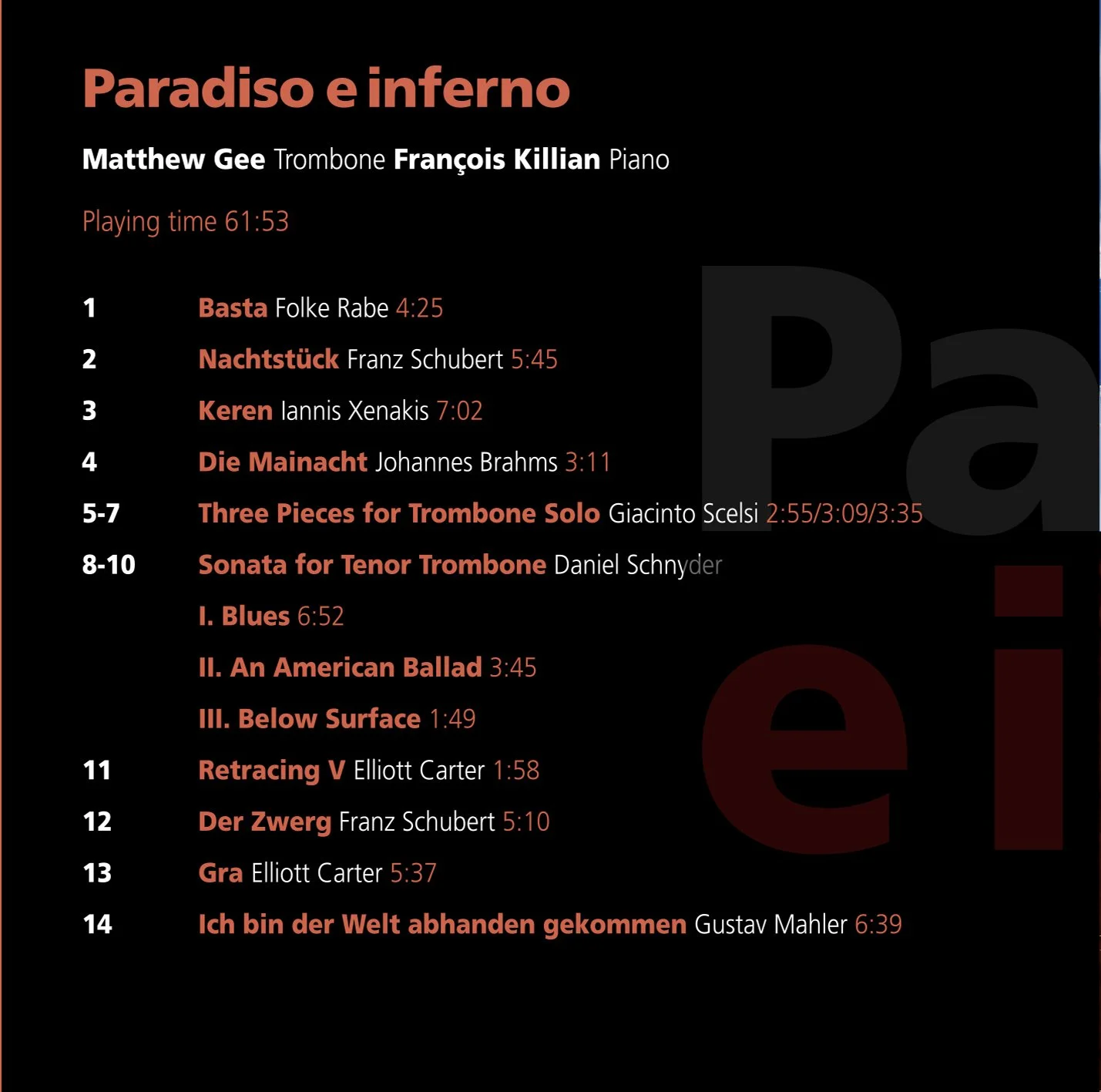Paradiso e inferno
For Berlioz, writing in 1884, the trombone was associated with a clear symbolic dichotomy, representing at times the heavenly, sacred and numinous, but at others the hellish, profane and phenomenal.
But these characteristics have been dissolved over the centuries, and we’re left with an instrument sorely misunderstood. As Berlioz notes, by its very nature the strength of the trombone lies in its ability to perform at the very extremes of the expressive spectrum: lyricism can readily juxtapose violent non-lyricism; tone-colour can be widely manipulated; a range of articulations, dynamics and sonorities can be produced that rivals and even possibly exceeds that of the human voice.
This recording highlights these strengths by pairing works, swiftly alternating between 20th–century showpieces and 19th–century songs, thus resurrecting the long-lost Jekyll and Hyde character of the solo trombone.


